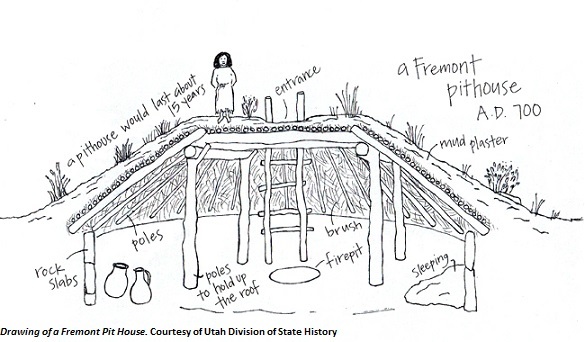Dublin Core
Title
Description
Birds do it… So do humans. In fact, humans in Utah have been heading south for winter for more than 1500 years.
Along the lower Bear River, where it stretches into the Great Salt Lake, are the remains of five prehistoric campsites. Archaeological excavations reveal that the Fremont Indians who lived there timed their annual travels through the area to take advantage of the weather and the local amenities. It’s a pattern we still follow centuries later, as “snowbirds" flee northern winters for warmer climates in the south.
Although the Fremont were not quite jet-setters, they kept several homes and visited them according to the season. Early each spring and again in the late autumn, the Fremont reopened their camps along the lower reaches of the Bear River. These were the best times to be on the Great Salt Lake, with ducks and geese arriving to use the river marshes as a way-station along their migratory path. Bison were also plentiful on the river during these months.
The five Fremont river camps stand a couple miles apart from each other, and were used seasonally for many generations. The earliest camp has been carbon dated to 540 A.D. and shows evidence of pit-houses, corrals and fences, as well as garbage pits that contain old pottery, tools, and the jumbled remnants of many dinners.
Another camp shows that its owners returned year after year to make repairs to their pit-houses. This site yielded pottery and tools, but also corn-grinding equipment that likely stayed with the camp, even as its owners moved around. Clay figurines and shells found at this site indicate long-reaching trade routes.
One hundred shallow storage pits at yet another camp show that the Fremont prudently stored food as part of their migratory lifestyle. Meat from a bounteous fall hunt would be dried and stored with corn for use the following spring.
Always on the move, the Fremont linked their lives to the seasons. They weren’t so different from today's northern Utahns, whose mobile homes mingle with I-15 traffic early each winter on the way to sunny Arizona.
Creator
Source
Image: Fremont Pit House Drawing. Drawing of the interior of a Fremont pit house. Courtesy of Utah State Historical Society.
_______________
See Utah State Historical Society, “The Fremont Indians’ Palm Beach,” History Blazer, June 1996, accessed at http://utahhistory.sdlhost.com/#/item/000000011019702/view/7; Lower Bear River Sites Antiquities Survey, Nomination Form, National Register of Historic Places, Preservation Office files, Utah Division of State History; Excavations at Snake Rock Village, University of Utah Anthropological Papers (Salt Lake City, 1967); and David B. Madsen, “The Fremont,” Utah History Encyclopedia, accessed at http://www.historytogo.utah.gov/utah_chapters/american_indians/thefremont.html.
Publisher
The Beehive Archive is a production of Utah Humanities. Find sources and the whole collection of past episodes at www.utahhumanities.org
Date
2014-12-05

